Because of the editors comment, Ive posted everything here instead, a duplicate of the webpage...
A 600w power inverter (£20 - maplin.co.uk (on offer at half price))
Total: £84
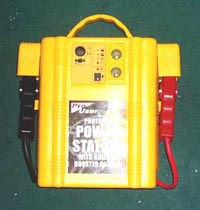
The powerpack is a 17.2Ah lead acid battery capable of 400 cranking amps to start a car with a flat battery.
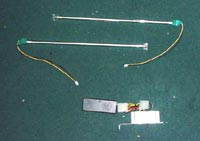
The cold cathode tubes are two 8 inch tubes. They draw about 0.5Amps each and Ive only ever used 1 at a time.


The two 1.5watt solar panels are identical and each gives out a maximum voltage of 21v open circuit and 125mA at full capacity. I can connect them in series or parallel, depending on light conditions.
Low light - Series for more voltage
High light - Parallel for more current

The inverter is 600watts. It draws about 50A at full load. It will be used sparingly because of the amount of current it draws.
Power Pack:
17.2Ah isnt a lot but for its price of £18 it was worth it. It has enough power to start up to a 2.0L petrol car and up to a 1.8L diesel car. It has 2 cigarette lighter sockets on the front hidden behind a sliding panel, and a charge state display in the form of 4 LED lights. You can connect things to the jump leads too. I have to do this for the solar panels as they use crocodile clips.
Solar Panels:
Because the solar panels give out so little current they have to be positioned for optimal use. Generally this is at a 45degree angle to the sun. Most light is collected at this angle. The maximum current I can get from each is 125mA, meaning a top current of 250mA. This is half the current of its original mains charger.
Cathodes:
I tested that the lights it will last roughly 20 hours continuous use on 1 cold cathode tube. This should be plenty for camping in May as it gets dark at around 10pm. Meaning we use the light for about 4 hours per night.
Inverter:
The inverter is a different matter. At full load (600w/50A) it will last less than 20 minutes! Using it sparingly is a necessity. Because the powerpack is a lead acid battery, letting it go flat will damage it to the point where its useless. Also, the solarpanels will not charge the powerpack very fast, especially in low light.
Lead acid battery charge level chart:
State of charge | Specific gravity | Voltage (12v | 6v)
- % | 1.265 | 12.7v | 6.3v
- % | 1.225 | 12.4v | 6.2v
- %* | 1.190* | 12.2v* | 6.1v*
- % | 1.155 | 12.0v | 6.0v
- % | 1.120 | 11.9v | 5.9v
* Once at this point, the battery will start to sulphate, damaging it and preventing its ability to hold a charge.
Here are some pictures to show you how bright just one of these cathode tubes is. The room was completely dark before I turned the cathode on.
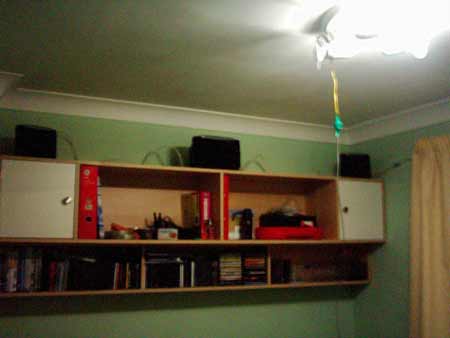
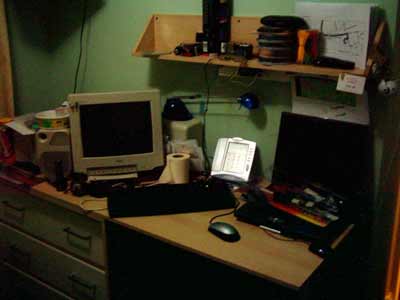
June 2006:
I have recently purchased 2 additional panels to go with the original two. They are the same type but a different colour. These ones are grey. I also got a charge controller.
Camping:
I have been camping but without the additional panels (I had the controller) and the system held up for the week while I was there, approaching a critical 12.5v (12.3v under load) during the week, but this was topped up with sun as every day I managed at least 10 hours of bright sun (every day was pure sun, so I was made up). I turned the panels as each day progressed to make the best of the sun. I managed to run the cathode tube most nights but the backup LED light came into play when the voltage fell to the critical level. I also used the system to charge up my mobile phone and PDA through their "car" chargers on the ciggy lighter sockets.
More pictures:
Multimeter showing a fully charged voltage of 13.25v.

The charge controller I am now using. It is rated at 0-25v at 5A.
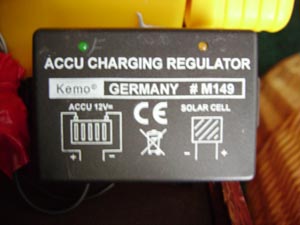
This is the battery and connections setup. Not exactly neat but its a portable setup. Im going to make this neater as time progresses.

These are the specs shown on the box of each solar panel, just as a bit of proof!

These are the panels set up against the window. I would put them outside but I need to build some sort of protection from the elements for them first.

Any comments? :-)